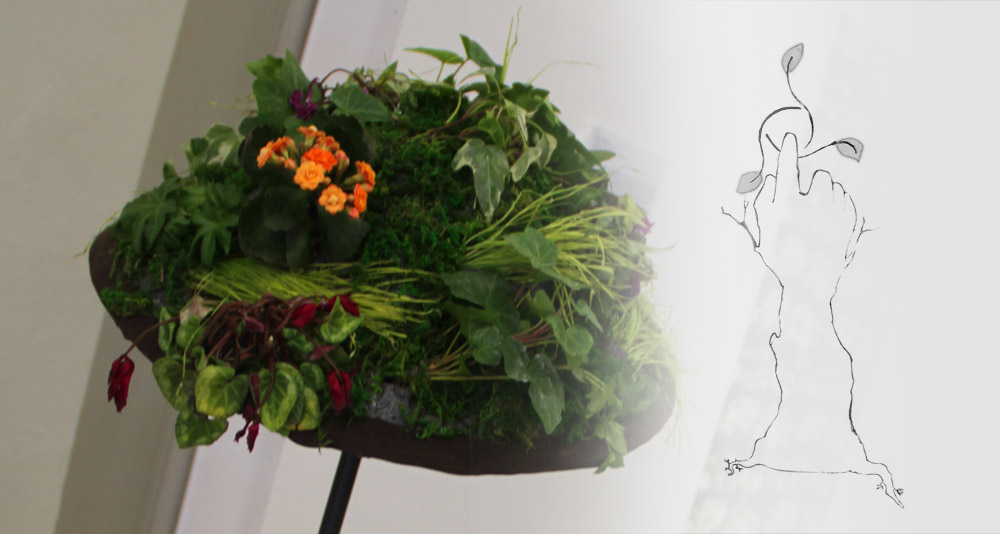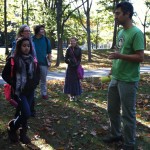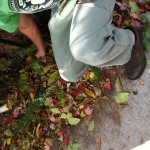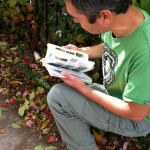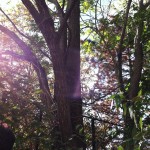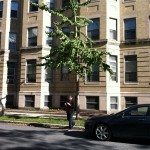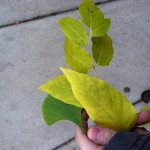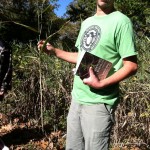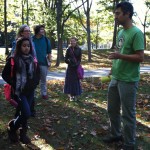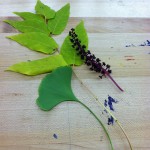 On Tuesday, October 16th, Dr. Nathan Phillips led a group of MassArt students and faculty on “A Tour of the Weeds of the Fenway.” As a student involved in sustainability efforts on campus, I was very excited to learn about local plant life and their uses.
On Tuesday, October 16th, Dr. Nathan Phillips led a group of MassArt students and faculty on “A Tour of the Weeds of the Fenway.” As a student involved in sustainability efforts on campus, I was very excited to learn about local plant life and their uses.
We began by looking at a low-growing, leafy plant known as garlic mustard. Garlic mustard began to gain notice in the 1980s, when it spread rapidly through the Northeast after having existed there far less prodigiously for many years prior. An edible plant, it remains green in the winter when similar sources like lettuce and spinach are dead or have not yet leafed, and is thus a very useful species. It also does very well in urban areas due to high nitrogen, nitric acid, and carbon dioxide levels.
We went on to identify Alanthis altisima (“Tree of Heaven”), Ginkgo, Phragmiti australis (“Common Reed”), and Japanese Knotweed, among other species.
Though some of the plants we studied are edible, Dr. Phillips stressed that one should never forage for food in an urban or suburban environment without first testing the soil for lead and other toxins. These toxins can be picked up by the plant and transferred to the human body. However, we can still learn much from these plant species and their current place within our social structures.
Throughout the tour, the group discussed questions such as:
What is a weed?
What is an invasive species?
Do “invasive” plants displace existing plant species, or do they occupy niches that other plants can’t?
Can humans develop relationships with so-called invasive and pest species, such as kudzu and the Eastern Coyote, to help solve climate issues?
We ended the tour with some tasty, homemade pesto – made from garlic mustard from Dr. Phillip’s yard (soil tested!).
Overall, I found the tour to be a fun and informative introduction to both the plant life of Boston and to co-habitation possibilities between humans and the plants we often dismiss as “weeds.”
posted by Amelia Young, 3D senior
All photos courtesy of Tess Lukey
